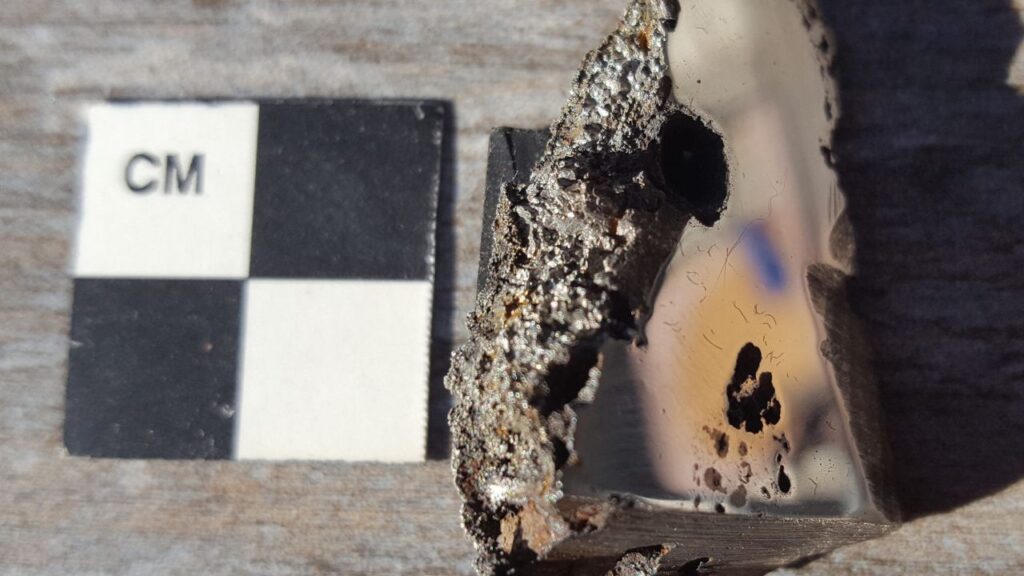A 15-ton meteorite recently crashed into Africa that contained two minerals unheard of on Earth.
Researchers found the new substances in a space rock that exploded when it landed near the border between Sudan and South Sudan. It’s rare for a meteoroid so huge to strike our planet. The minerals, which contain elements not seen in known minerals, condensed from gas left over after the sun formed about 4.6 billion years ago, scientists report online March 31 in American Mineralogist.
The find could help scientists understand what materials exist elsewhere in the solar system and how those materials might have been distributed, says Chi Ma, a mineralogist at Caltech who was not involved with the research. Researchers are “really interested” in unusual minerals like these because they allow scientists to probe such questions, he says.
For space agencies planning missions to asteroids or other planets, knowing what materials can be found beyond Earth is important for determining where to go and what resources might be available for use by future astronauts (SN: 8/1/20 & 8/15/20).
Researchers used lab-created versions of the newfound minerals to identify their properties. That allowed them to compare samples of each mineral against one another — something they wouldn’t have been able to do had they relied solely on tiny grains extracted from the meteorite itself.
Lab-made versions of these minerals are becoming more common in studies aimed at understanding complicated physical and chemical properties or at probing other-worldly substances without sending teams into space.
Researchers also created five synthetic versions of one of the newfound minerals along with two synthetic versions each of two previously discovered related substances. Those are called zirconium isosilicate, sodium-potassium isosilicate and sodium-potassium silicon nitride.







